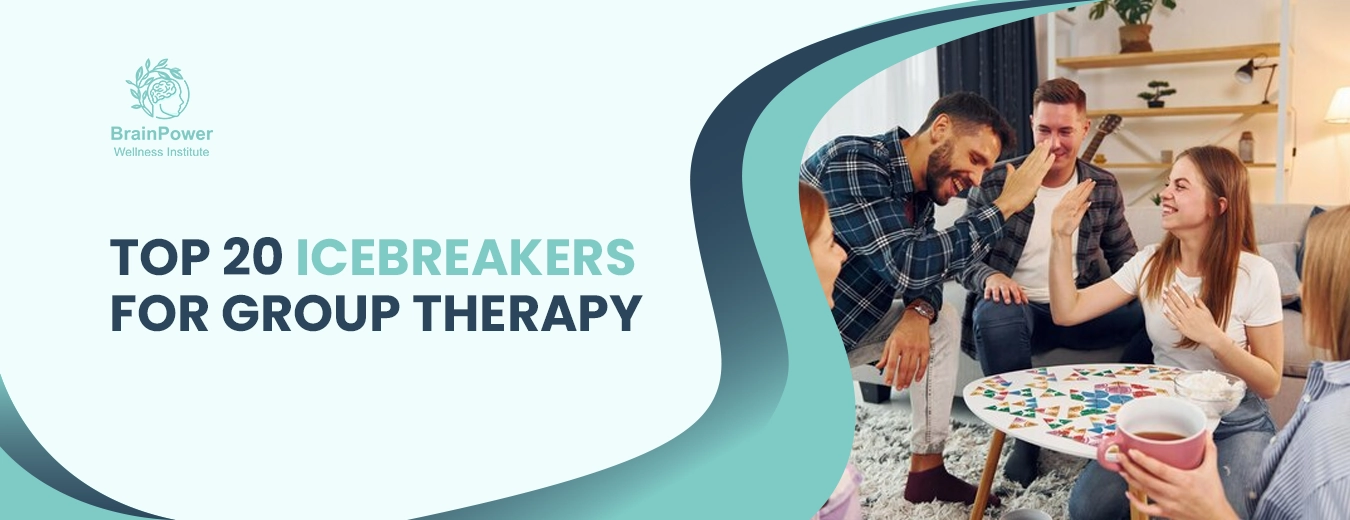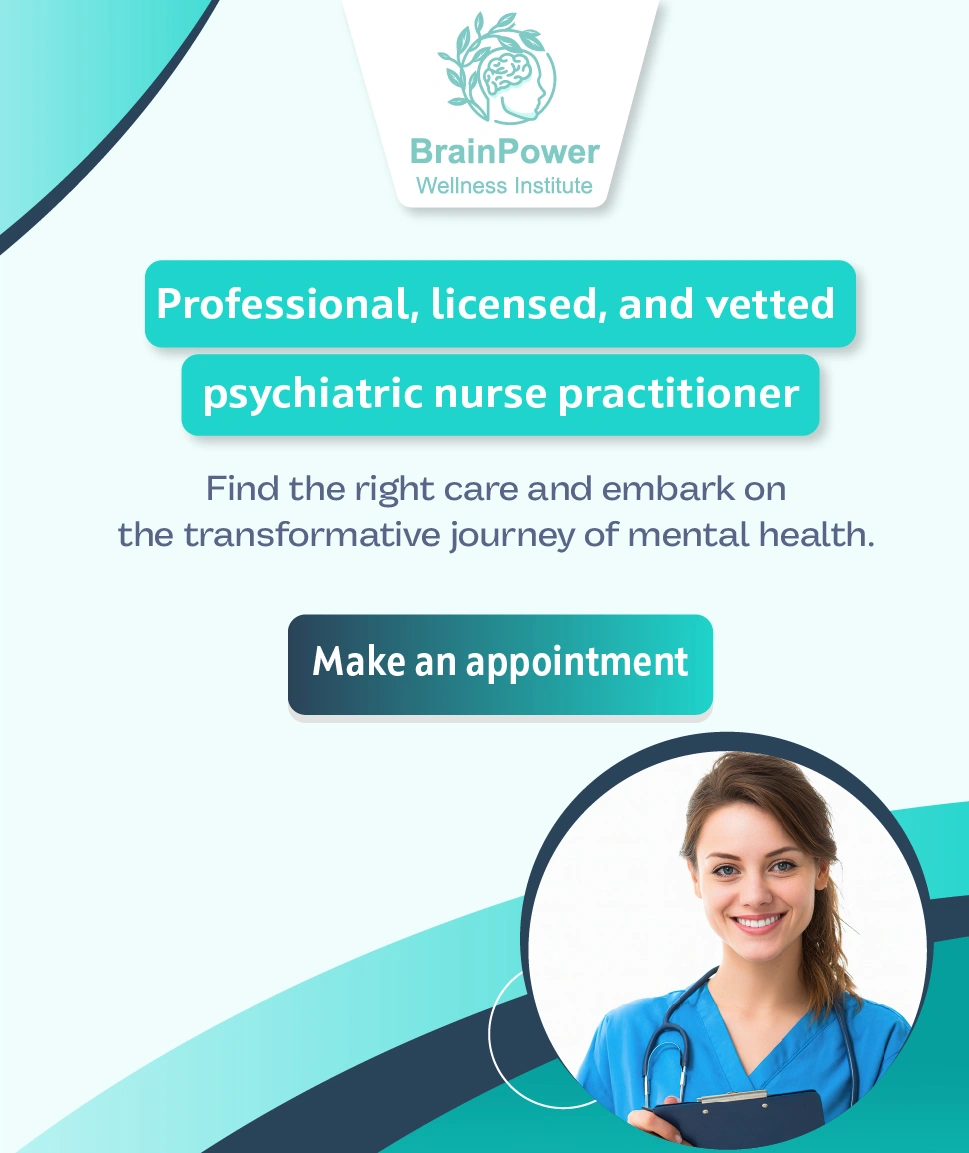Icebreakers for group therapy are specialized activities or techniques that develop the interest of individuals in group therapy settings so they better participate and learn multiple things to overcome their mental issues. Mental health professionals consider the icebreakers a vital tool to make group therapy more fun, creative, and engaging so all individuals, including children, adolescents, and adults, communicate effectively with all group therapy members and learn multiple skills and coping strategies.
If you are dealing with any mental illness and planning to join any group therapy session, then read this article to get a complete guide regarding the fun icebreakers for group therapy. After reading this article, you will get familiar with all the top group therapy activities to help you feel comfortable and grab the multiple benefits. So, let’s start!
What is Group therapy?
Group therapy is a type of psychotherapy or talk therapy in which mental health patients interact with professional experts and get the best solutions that help them get relief from their mental illnesses. In addition, all the group members present in a group therapy setting are battling with the same mental illness and have the same goal of getting rid of that mental issue.
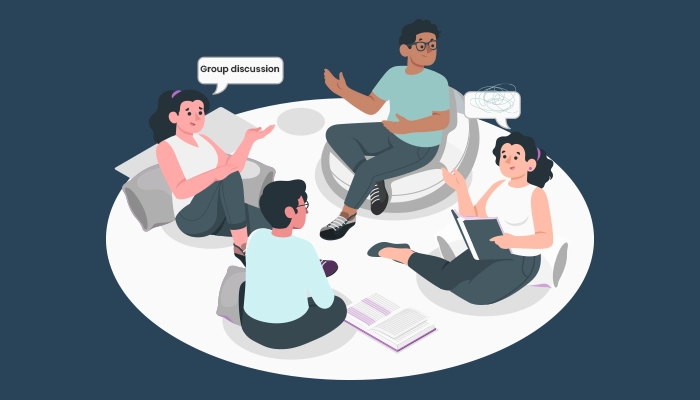
Group therapy is ideal for those individuals who have reduced confidence and face difficulty speaking up in front of others. Therefore, experts provide diverse group therapy icebreakers or activities that develop their interest and increase their confidence and self-esteem.
What are Icebreakers?
“Icebreakers are activities designed to help individuals get to know each other and foster communication in group therapy sessions. The main aim of icebreakers for group therapy is to create a healthy, relaxed, comfortable, and productive atmosphere where each participant feels free to share their thoughts and emotions without hesitation, fear of criticism or judgment”.
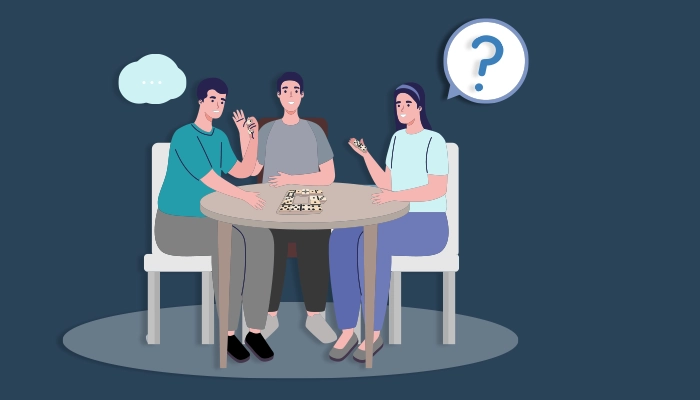
Icebreakers for group therapy are fun or engaging activities that increase the participation of individuals in group therapy settings. With the help of icebreakers, each group member gets a chance to learn the essential things to get relief from mental illness. Multiple studies have reported that icebreakers are highly effective in increasing group cohesion and promoting all group members’ interactions, reducing their stress or anxiety.
Furthermore, icebreakers for group therapy can easily be implemented and urge individuals to feel secure and comfortable in group therapeutic settings.
20 Icebreakers for Group Therapy for Teens & Adults
The top 20 icebreakers for group therapy for teenagers and adults include:
1. Two Truths and a Lie
In this group therapy, experts ask the individuals to share three statements about themselves, two being facts and the third being a lie. As one participant does this, others are instructed to guess which statement is correct and which is not based on the fact. All the group therapy participants write down their responses or answers and then show them on the screen or an interactive whiteboard. This icebreaker for group therapy favours individuals’ positive and healthy interaction, which also develops their social skills.
2. Who am I?
This icebreaker or group therapy is effective for those individuals who are new members of the group therapy setting. In this fun and engaging activity, each group member is asked to share a short introduction of themselves. They are asked to share a single word or letter with which their name starts. Moreover, they are also asked to share their positive personality traits. When each new member does this, their confidence increases, and they never feel shy to speak openly in front of anyone.
3. Getting to know you
In this icebreaker for group therapy, experts say some phrases in front of the group members that involve specific questions about them. The questions are concise, clear, and unfinished; then, experts ask the participants to complete them. For example:
- Tell me something about yourself.
- Is there anything in your personality that makes you feel proud and happy?
- Which activity do you feel comfortable with, or what’s your favorite hobby?
- Is there any memory that you want to share with us?
- What should we do together to make the group therapy more interesting or engaging?
4. Desert Island Scenario
Suppose a person develops a specific scenario in the mind and starts thinking about it. In that case, the mind starts activating those neural pathways that help them learn and remember different things. In this icebreaker for group therapy, experts ask the individuals to think about a scenario in their mind in which they are stuck on any desert island, and they have to carry three things for their survival. Experts ask all individuals to share their opinions on what they will choose to survive in that critical period. Then, each individual puts pressure on their mind to share more thoughtful and productive thoughts with the group members and increase each other’s interest. Moreover, this activity also develops social, communication, and problem-solving skills.
5. Common ground
Common Ground is also a fun group therapy activity in which experts instruct the group members to find out and then share their everyday things. In this way, they get to know each other better and attract each other based on their typical personality traits. Moreover, this activity also plays a significant role in developing a sense of unity and cooperation between them.
6. Give me a minute
As the name indicates, this group therapy activity is designed to give some time for individuals to speak about something. This activity is helpful for new members, as well as for already established group therapy settings. Experts share some cards or pieces of paper in which they write topics or subjects that each group member is asked to say something about.
On every single turn, each member gets the limited time to share interesting thoughts or opinions on varied subjects, including any TV series, knowledgeable concept, or any other most extraordinary or surprising thing they have ever seen.
7. Emoji game
An Emoji game is an ideal icebreaker for group therapy activity that helps individuals express their emotions entirely. Usually, individuals suffering from common mental issues face difficulty in expressing what they feel. So, experts play an emoji game in which they ask the group members to share their emotions and feelings through emojis.
Moreover, they give them a free hand to draw any image or face with a specific expression. This group therapy activity is most suitable for children as they usually face more difficulty revealing their inner selves. Furthermore, most experts also use teletherapy software to conduct this game.
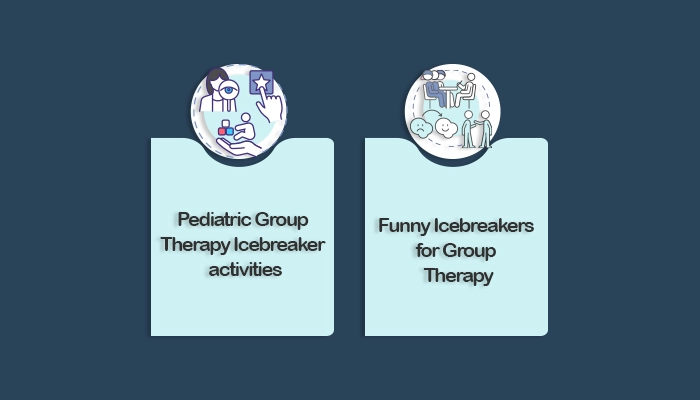
8. The M&M Icebreaker
This icebreaker for group therapy is highly interesting and delicious as children can win a reward for brain-storming. Experts make a bag of M&M candies and assign a question to each candy color. They pass the bowl to a group of children and ask them to choose one M&M candy and answer the question before eating. Questions are varied, such as:
- Talk about your favorite place that you want to visit more often
- Who is your best friend, and what traits make them your best friend
- Who is your favorite school teacher, and why?
- Share any cherished memory
- What is your greatest fear?
When children answer each question, they overcome their awkwardness and ease the stress or tension. Moreover, they consider the environment more friendly and easily participate in each social setting.
9. Favorite book/Movie character
Experts ask each group member to share their favorite book or a character from any movie they prefer to watch whenever they get time. They share all the personality traits of their favorite character. This leads to the most engaging discussions in which each group participant takes more interest and spends quality time giving them diverse benefits.
10. Mindful colouring
Mindful coloring involves combining mindfulness meditation and innovative coloring, Princess. In this group therapy activity, experts ask the children to draw anything on paper and add colors while focusing on the present moment. This is the best way to reduce stress or anxiety while improving focus and concentration at the same time. With the help of mindful coloring, children feel not only relaxed but also learn multiple things.
11. Collaborative drawing
Collaborative drawing is another fun group therapy activity in which all the group participants collaborate and create a single piece of artwork. They are provided with a single master of paper on canvas, and at each turn, each group member must show their contribution to drawing. This therapy teaches the children multiple skills and encourages teamwork.
12. Think about your favorite animal
Experts ask the children to think about any animal they want to be. Then, each child wrote the name of the animal and its characteristics that they love the most. They are asked to think in a specific time frame, and they share their thoughts or opinions as the time ends. This icebreaker for group therapy develops multiple them and enhances learning and memory.
13. Thinking of any superpower
Another major icebreaker is that experts ask the children to suppose that they have a superpower for a day. Then, what will they do by using their powers? Then, they also ask more profound questions about the benefits of the power for them and others. In this way, they learn that having some positive and quality traits is vital to achieving anything in life or their goals.
14. Musical chair
To make the group therapy more engaging, experts also play a game of musical chairs with children. They play a song or any melody throughout the game so they never feel bored and remain active.
15. Hitting a ball
All the children of group therapy are given instructions to make a circle by standing in a sequence. The experts bring a softball and ask any child to start the game by winning a toss and throwing a ball at another child. While doing this, each child is asked to share any interesting or straightforward fact. They are also requested to share anything about themselves, such as their favorite color, dress, or food item. In this way, each child obtains some confidence and learns to communicate effectively with each other.
16. Bingo cards
Bingo cards are another icebreaker for group therapy that works for children who fail to communicate with each other due to lower confidence and self-esteem. Bingo cards are also called playing cards, and children mostly use them. Experts make a big square that mentions questions each child must answer to win the game. Due to multiple sessions of icebreakers for group therapy, children learn and develop various skills that help them in both academic and personal lives.
17. The compliment circle
All the group therapy members are asked to stand in a circle and compliment each other. In this way, they develop a positive image of themselves and also positive group dynamics. Moreover, they also see a significant rise in their self-esteem and confidence.
18. Show and tell
In this activity, each group member brings a critical thing to them and then shares a related story. This way, all group participants learn about each other’s life and values.
19. Virtual scavenger hunt
A virtual scavenger hunt is a major group therapy activity that can break the ice. Experts only ask individuals to bring anything from their homes so they never get into trouble and their interests remain the same. They are initially instructed to show those things to others that make them happy. This, in turn, promotes positivity among all group therapy members.
20. Eye contact
Individuals combating anxiety or other common mental issues are unable to understand each other’s emotional states. Therefore, developing eye contact is also a valuable icebreaker for group therapy. Each group member maintains eye contact with another member for a specified period. During eye contact, they become aware of each other’s psychological or mental condition, as the eyes are considered the best means to express emotions.
Furthermore, eye contact also assists individuals in the following ways:
- Building trust and confidence among each group participant
- Develops social skills by overcoming eye contact anxiety
- Enhances the reading of emotions and social clues
- Build a strong sense of intimacy
What are the benefits of using Icebreakers for group therapy?
There are numerous benefits of using the icebreakers for group therapy, such as:
1. Constructing a positive environment
Most of the individuals usually feel uncomfortable in initial group therapy sessions. However, icebreakers develop a healthy, friendly, and non-judgmental environment where each group member does not feel shy, takes their heart out, and easily scopes the initial stress, anxiety, and discomfort. Moreover, this results in the increased rate of active engagement of individuals in group therapy sessions, where they find the finest strategies to manage the symptoms of their mental illnesses.
2. Building trust
Icebreakers also help in developing trust or rapport among mental health experts and individuals suffering from mental health issues. The trust factor allows them to discuss their mental matters intensely.
3. Development of creative skills
When individuals participate in group therapy activities, their brains receive signs of active participation. Moreover, they also develop multiple creative and problem-solving skills when they try to think outside the box. They can effectively analyze and solve complex problems within a few group therapy sessions.
4. Development of social skills
Icebreakers for group therapy also promote the development of social skills in individuals. Individuals feel confident and learn social skills that help them to contribute to each social activity and exhibit their potential in front of others.
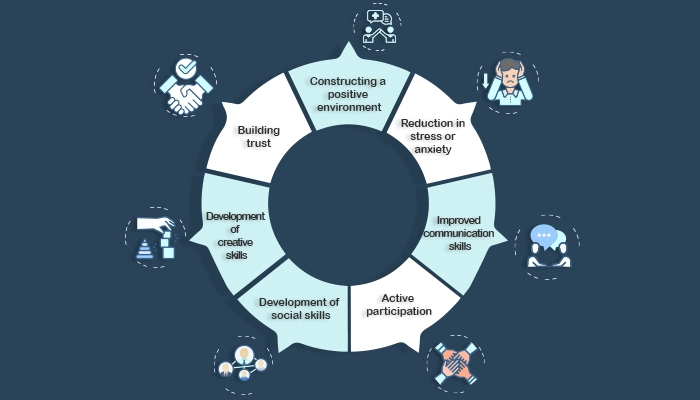
5. Active participation
Icebreakers for group therapy favor the active participation of each group member by providing a secure, friendly, and non-threatening environment. Each member communicates with each other and learns multiple things simultaneously.
6. Improved communication skills
During the group therapy activities, each group member can participate in each activity and share their thoughts, emotions, and opinions related to the activity. This results in significant improvement in their communication skills. Moreover, group members share their experiences and help each other learn from them.
7. Reduction in stress or anxiety
Individuals get an idea that they are not alone in their mental health struggles. Moreover, icebreakers for group therapy develop a sense of safety or belonging, and individuals learn how to regulate their emotions.
How do you choose the right Group therapy Icebreakers?
If you are planning to take benefit of icebreakers for group therapy, then consider the following points:
1. Evaluate the age
Before developing the strategy of icebreakers, the first thing that you should do is to determine the age group of individuals who are in group therapy sessions. Whether the group members are children, adolescents, or adults, develop the icebreaker strategy accordingly.
2. Evaluate the size of the group
Just like age, the size of the group also matters a lot. The group therapy setting might include the children of a school or any organization or a few teens or adults. So be careful to choose the most suitable activity that meets each group size’s requirements.
3. Consider the timeframe
If there is a qualitative icebreaker and you work within the assigned time frame, you can reap more positive and optimal results. Therefore, only select those icebreakers for group therapy that never disrupt the schedule.
4. Determine familiarity in group settings
You should also determine whether the group members of a group therapy setting are new or already know each other. If the group setting is entirely new, try using the simple and easy-to-understand easy-to-understand fun icebreakers for group therapy, so each individual feels comfortable.
5. Supportive environment
The environment developed during each icebreaker of group therapy should be secure, non-judgmental, and friendly so each participant feels relaxed and learns things that truly matter.
6. Feasibility regarding each culture
The point that should be considered is that each icebreaker is culturally sensitive. Therefore, while making the strategy, it should be noted that the developed icebreakers for group therapy favor all the diverse experiences and backgrounds of all experiences.
7. Developing a sense of unity
Those icebreaker activities should only be selected to increase the interest or gain the attention of individuals toward the group therapy settings.
8. Increased adaptability
Each icebreaker of group therapy activity should also be flexible and adaptable to the responses of all group members so each member never feels forced to participate and feels more fun, pleasure, and interest.
9. Emotional processing
Icebreakers should help individuals develop social skills and learn better ways to communicate with each other in group therapy. Moreover, it also helps in the effective processing of emotions.
Seek Professional help to break the ice!
At Brainpower Wellness Institute, our mental health experts specialize in treating mental health disorders and teach individuals effective coping or adaptive strategies. Moreover, they also offer group therapy sessions in which they conduct multiple fun, creative as well as engaging icebreakers for group therapy that provide individuals additional assistance to get permanent relief from their mental health issues. We also offer group therapy settings through telehealth, which gives ease to individuals who cannot do the physical commute or are exposed to any physical barriers.
So, if you are concerned with your mental wellness, then come forward and schedule a consultation with our mental health experts and overcome your mental illness now.
Concluding thoughts
Icebreakers for group therapy are the best ways to favor increased individual participation in each group therapy setting. Both new and previously developed icebreakers provide significant advantages to each group member in multiple ways. Team-building exercises for therapy groups or mental health icebreakers for adults create better communication among each group participant. Moreover, this helps generate a range of valuable skills, including social and communication skills. Each individual, including children, teenagers, and adults, can benefit from the fun icebreakers for group therapy.
Related Articles:
A Guide to Group Therapy for Borderline Personality Disorder
The Ultimate Guide to Engaging Group Therapy Activities
